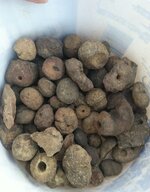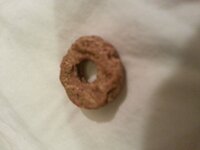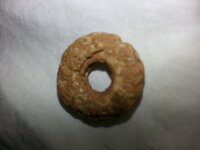- Jan 27, 2009
- 18,788
- 11,896
- 🥇 Banner finds
- 1
- Detector(s) used
- Tesoro Conquistador freq shift
Fisher F75
Garrett AT-Pro
Garet carrot
Neodymium magnets
5' Probe
- Primary Interest:
- All Treasure Hunting
Hi
A friend found these rocks in Tellico Tennessee on the Tellico river. What do you all think might have caused them to be shaped as such. They are not real hard and slightly porous similar to sandstone or mountain stone in weight and texture. She appreciates any help you experts might provide.
Thank you and..click the pic for enlargement.
HH
TnMtns
A friend found these rocks in Tellico Tennessee on the Tellico river. What do you all think might have caused them to be shaped as such. They are not real hard and slightly porous similar to sandstone or mountain stone in weight and texture. She appreciates any help you experts might provide.
Thank you and..click the pic for enlargement.
HH
TnMtns







